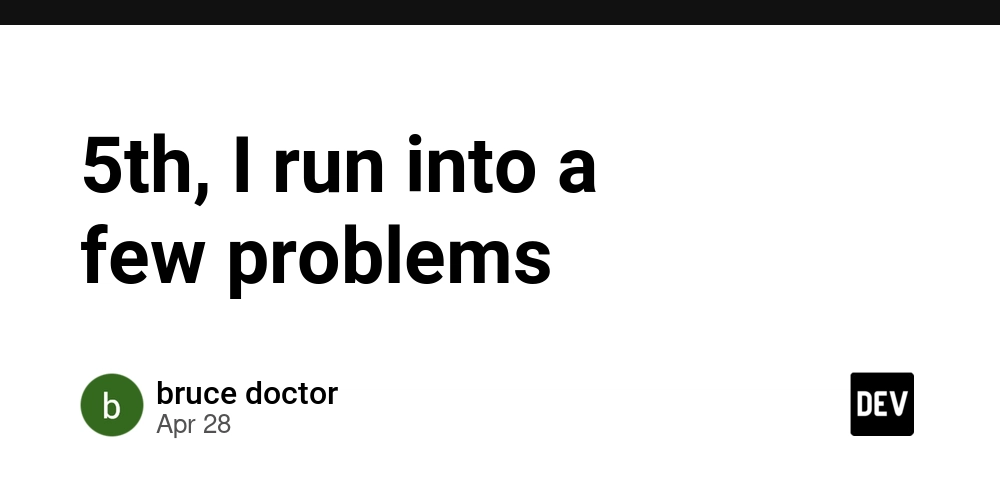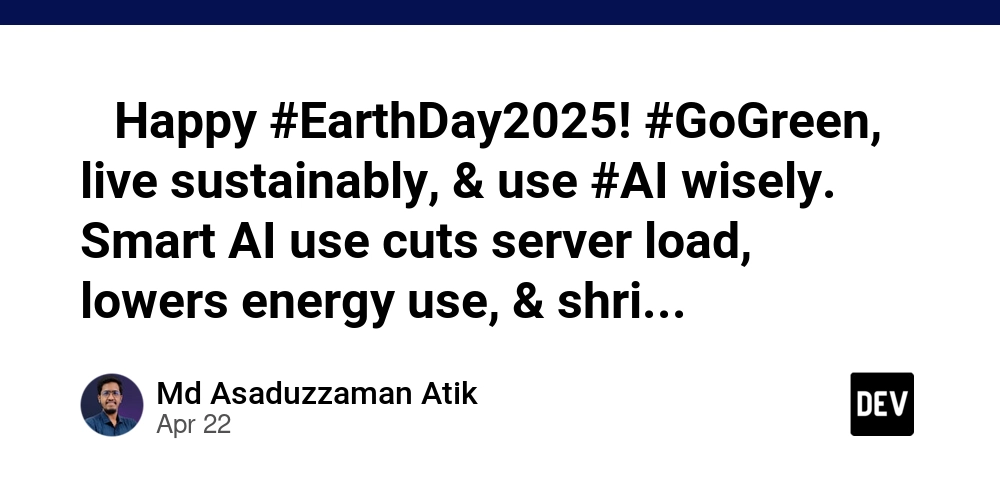CSS is Emotional: A Conversation with Eric Meyer
In the ever-evolving world of web development, few voices carry the weight of experience and wisdom that Eric Meyer's does. As one of the pioneers who helped shape CSS into what it is today, his journey through the history of the web is of utmost importance into not just the technical aspects of our craft, but also the human elements that fortify it. I recently had the privilege of sitting down with Eric for a conversation about CSS, its history, and the numerous ways in which our humanity influences the technology we create. While his original career plan might have been to pursue graduate studies in English, the web came along and changed everything. CSS: A Language of Its Own Eric sees a connection between his love of history and language and his work with CSS. "I still do languages, still try to figure out the grammar of them as it were," he notes. This linguistic approach to CSS has informed Eric's extensive work teaching and documenting the language, most notably in his comprehensive reference book "CSS: The Definitive Guide," now in its fifth edition (co-authored with Estelle Weyl). At nearly 1,200 pages, it's a testament to Eric's dedication to helping others understand CSS deeply, not just use it superficially. "I didn't write this because I just wanted to have a huge pile of paper or a huge PDF or whatever with my name on it. I wrote this because I want people to be able to use CSS and I want them to understand how to use CSS," he says. The Human-Centered Web Throughout our conversation, Eric repeatedly emphasized how the web's fundamental design prioritizes human needs and accessibility. "The web is a fundamentally human-first medium, a fundamentally human-first technology," Eric states with conviction. "There are too many technologies in the world today that are not." This human-centered approach extends to CSS specifications themselves. When I asked about the major driving forces behind decisions in the CSS spec, Eric explained that it comes down to what capabilities can be given to authors, designers, and developers, but to also consider privacy, security, and accessibility. "CSS, like JavaScript, like DOM, like HTML for that matter goes through security, privacy, accessibility reviews. Is it going to leak private information? Is it going to potentially compromise user's security? Or does it create an attack surface for people to try to gain unauthorized access to machines?" He gave a fascinating example of how visited link styling was completely changed in 2009-2010 for privacy reasons. Before that change, websites could determine whether you had visited certain sites based on the styling of links. Now, browsers deliberately "lie" in the DOM about visited link colors to prevent this privacy breach. "If I say a:visited purple, which is the standard behavior of a link that I have not visited as blue and a link that I have visited as purple. If you ask through the DOM in JavaScript what the color of a visited link is, it will tell you blue or whatever the unvisited link color is on a given site. So as not to leak that information." Rebecca Purple: When Humanity and Technology Meets Perhaps no moment better illustrates the intersection of humanity and technology in CSS than the story behind Rebecca Purple (color value #663399), which was named in memory of Eric's daughter Rebecca, who passed away from brain cancer in 2014 at the age of six. "My middle daughter, Rebecca, in 2013, when she was just a few months into being five, was discovered to have aggressive brain cancer. We fought really hard to get her treatment. I mean, we got her treatment and she had another nine months of really good life, but she died in 2014 on her sixth birthday." After her passing, the web community rallied to honor her memory by proposing a color be named after her in CSS. The proposal moved through the W3C process with remarkable speed, and within two weeks it was officially added to the specification. "What it taught me was that community can influence technologies," Eric reflects. "Like coming together and saying, 'We want to memorialize this person, and here's how we want to do it'" The color continues to hold significance in the CSS world, when CSS got a new logo in fall 2024, the community overwhelmingly chose Rebecca Purple as the logo color. "In the way that this is a part of the history of the web, if being remembered means you're not truly gone, she will outlive me, which is what any parent wants for their child anyway. This is the only way that she can do that, unfortunately, that I know of, but I'll take it." Bringing Our Humanity to Our Work When I asked how we can bring more of our humanity into technical spaces, Eric emphasized the importance of approaching our work with the same genuine qualities that made Rebecca special. These qualities include joy, curiosity, creativity, and assertiveness. "Bring yourself to what you do. If you're joyful and cur

In the ever-evolving world of web development, few voices carry the weight of experience and wisdom that Eric Meyer's does. As one of the pioneers who helped shape CSS into what it is today, his journey through the history of the web is of utmost importance into not just the technical aspects of our craft, but also the human elements that fortify it.
I recently had the privilege of sitting down with Eric for a conversation about CSS, its history, and the numerous ways in which our humanity influences the technology we create.
While his original career plan might have been to pursue graduate studies in English, the web came along and changed everything.
CSS: A Language of Its Own
Eric sees a connection between his love of history and language and his work with CSS.
"I still do languages, still try to figure out the grammar of them as it were," he notes.
This linguistic approach to CSS has informed Eric's extensive work teaching and documenting the language, most notably in his comprehensive reference book "CSS: The Definitive Guide," now in its fifth edition (co-authored with Estelle Weyl). At nearly 1,200 pages, it's a testament to Eric's dedication to helping others understand CSS deeply, not just use it superficially.
"I didn't write this because I just wanted to have a huge pile of paper or a huge PDF or whatever with my name on it. I wrote this because I want people to be able to use CSS and I want them to understand how to use CSS," he says.
The Human-Centered Web
Throughout our conversation, Eric repeatedly emphasized how the web's fundamental design prioritizes human needs and accessibility.
"The web is a fundamentally human-first medium, a fundamentally human-first technology," Eric states with conviction. "There are too many technologies in the world today that are not."
This human-centered approach extends to CSS specifications themselves. When I asked about the major driving forces behind decisions in the CSS spec, Eric explained that it comes down to what capabilities can be given to authors, designers, and developers, but to also consider privacy, security, and accessibility.
"CSS, like JavaScript, like DOM, like HTML for that matter goes through security, privacy, accessibility reviews. Is it going to leak private information? Is it going to potentially compromise user's security? Or does it create an attack surface for people to try to gain unauthorized access to machines?"
He gave a fascinating example of how visited link styling was completely changed in 2009-2010 for privacy reasons. Before that change, websites could determine whether you had visited certain sites based on the styling of links. Now, browsers deliberately "lie" in the DOM about visited link colors to prevent this privacy breach.
"If I say a:visited purple, which is the standard behavior of a link that I have not visited as blue and a link that I have visited as purple. If you ask through the DOM in JavaScript what the color of a visited link is, it will tell you blue or whatever the unvisited link color is on a given site. So as not to leak that information."
Rebecca Purple: When Humanity and Technology Meets
Perhaps no moment better illustrates the intersection of humanity and technology in CSS than the story behind Rebecca Purple (color value #663399), which was named in memory of Eric's daughter Rebecca, who passed away from brain cancer in 2014 at the age of six.
"My middle daughter, Rebecca, in 2013, when she was just a few months into being five, was discovered to have aggressive brain cancer. We fought really hard to get her treatment. I mean, we got her treatment and she had another nine months of really good life, but she died in 2014 on her sixth birthday."
After her passing, the web community rallied to honor her memory by proposing a color be named after her in CSS. The proposal moved through the W3C process with remarkable speed, and within two weeks it was officially added to the specification.
"What it taught me was that community can influence technologies," Eric reflects. "Like coming together and saying, 'We want to memorialize this person, and here's how we want to do it'"
The color continues to hold significance in the CSS world, when CSS got a new logo in fall 2024, the community overwhelmingly chose Rebecca Purple as the logo color.
"In the way that this is a part of the history of the web, if being remembered means you're not truly gone, she will outlive me, which is what any parent wants for their child anyway. This is the only way that she can do that, unfortunately, that I know of, but I'll take it."
Bringing Our Humanity to Our Work
When I asked how we can bring more of our humanity into technical spaces, Eric emphasized the importance of approaching our work with the same genuine qualities that made Rebecca special. These qualities include joy, curiosity, creativity, and assertiveness.
"Bring yourself to what you do. If you're joyful and curious, bring that to what you do and what you create. If you're reserved and analytical, bring that to what you do. There's more than enough room in this world for all kinds of approaches to things."
He encourages us to maintain a childlike perspective on whether something will help or harm, to focus on being constructive, and to consider how our work affects communities, and not just individuals.
"We live in a society, right? Whatever society that is. I live in a society that's different from yours, but in almost all, I think probably in every fundamentally important way, they're the same."
Looking to the Future
As we look toward the future of CSS, Eric believes we'll continue to see advancements that balance pragmatism with emotional intelligence, we will consider not just what's technically possible, but how it affects real people.
He points to exciting developments like anchor positioning, which is starting to land in browsers and will make previously complex layouts simple to achieve. But he emphasizes that these technical advancements will always be evaluated through the lens of human impact.
"The human-centric property of all these technologies, the human-first design principle continues to be a way that all these technologies are evaluated. And I hope that that will never change."
For Eric, this human-centered approach is what makes the web unique and valuable:
"You can still get the first webpage ever written and have it rendered in your browser and it works. And it doesn't even look that different... The links work. And I can take one of the very first web browsers and display my website in it... I can read the text. I can follow the hyperlinks. I can go to Wikipedia in this browser and I can read Wikipedia. I can't see any images because it's literally a text mode browser. It doesn't have image capability, but I can read the content using a browser that came out in 1991."
Moving Forward
At the close of our conversation, Eric talked about his family and how they've moved forward. "We move forward..." he says simply.
He reflected on grief and healing with wisdom gained through experience: "Someone told me when my mother died, about how you don't get over it, but you get used to it, which I think is very true. You don't get over it in the sense of being able to put it away and then like that's done. It's never done, but you get used to it."
His message for those experiencing grief is powerful: "For anyone who's listening to this, who maybe has their own fresh grief of some variety... If you're wondering how you can ever live with this, it's that you get used to it. But, I would also say you're never required to get over it... Nobody else gets to decide for you when you've moved to different stages of grief. And for a deep enough grief, it never really leaves you."
My conversation with Eric Meyer reminded me that behind every line of code, every CSS property, and every web specification are people. People who have histories, joys, sorrows, and humanity. As we build the web of tomorrow, may we remember to bring not just our technical skills, but our full selves to the work. May we truly create technologies that serve and mirror our shared humanity.
CSS itself shares this humanity. It's flexible, and adaptable. It can sometimes be frustrating but ultimately forgiving. It allows one to creatively express themselves, and still maintain structure. CSS embraces the messiness that is inherent in human design but also strives for consistency.
As we continue to evolve the web, let's remember that our code doesn't just render pixels on screens, it also creates ways for humans to connect with themselves. CSS enables expression, and influences our experiences. Our technical choices carry lots of emotional weight. Why? Because at its root is a web that is about people connecting with other people. And that connection is an exceptional human element intertwined through every specification and standard. All these remind us that indeed, CSS is Emotional.
Wow! What a journey it's been! It has been an incredible honor to speak with Eric Meyer for this grand finale. As someone whose work has shaped the very foundation of how we think about and use CSS, his candid insights are truly invaluable. You can follow him on his website or Mastodon.
I will be sharing the videos from this interview on my YouTube Channel. Subscribe to get the updates as soon as they drop!
If you're just joining us or want to relive the magic, dive into the complete collection
And one more time, here's the CodePen used to design the banner
































































































































































![[The AI Show Episode 143]: ChatGPT Revenue Surge, New AGI Timelines, Amazon’s AI Agent, Claude for Education, Model Context Protocol & LLMs Pass the Turing Test](https://www.marketingaiinstitute.com/hubfs/ep%20143%20cover.png)































































































































![[DEALS] Koofr Cloud Storage: Lifetime Subscription (1TB) (80% off) & Other Deals Up To 98% Off – Offers End Soon!](https://www.javacodegeeks.com/wp-content/uploads/2012/12/jcg-logo.jpg)
























![Is this too much for a modular monolith system? [closed]](https://i.sstatic.net/pYL1nsfg.png)




















































































































_roibu_Alamy.jpg?width=1280&auto=webp&quality=80&disable=upscale#)




 CISO’s Core Focus.webp?#)







































































































![M4 MacBook Air Drops to Just $849 - Act Fast! [Lowest Price Ever]](https://www.iclarified.com/images/news/97140/97140/97140-640.jpg)
![Apple Smart Glasses Not Close to Being Ready as Meta Targets 2025 [Gurman]](https://www.iclarified.com/images/news/97139/97139/97139-640.jpg)
![iPadOS 19 May Introduce Menu Bar, iOS 19 to Support External Displays [Rumor]](https://www.iclarified.com/images/news/97137/97137/97137-640.jpg)




































































































